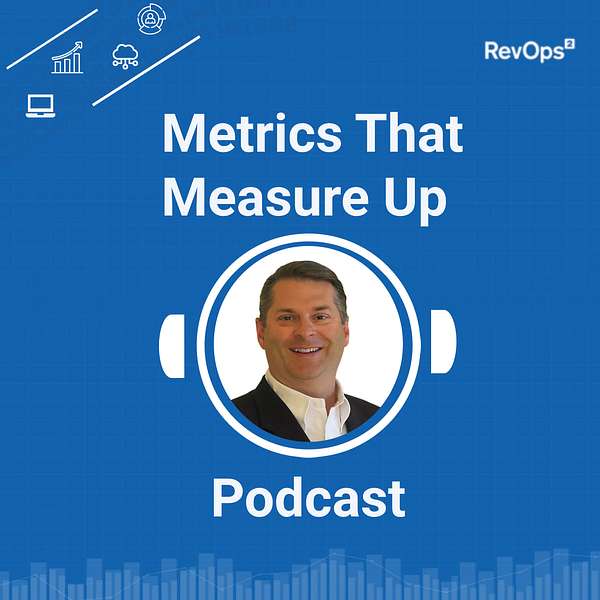
Metrics that Measure Up
Metrics that Measure Up
Product-Led Growth and B2B Sales - Best of Both Worlds - with Tim Geisenheimer, CEO at Correlated
Product-Led Growth (PLG) and B2B Sales - how do they co-exist in the evolving world of Go-To-Market strategy in B2B SaaS?
On this episode of the Metrics that Measure Up podcast we are joined by Tim Geisenheimer, Founder and CEO of Correlated.
Tim's first experience was leading a sales team in a PLG company where he experienced the change in how customers first experience a product. PLG requires the sales team to truly understand "HOW" customers are using the product, and adjust their sales outreach accordingly.
First, we discussed the real and perceived risks that sales face in a PLG company. Tim said that sales is critical in PLG companies, though the skills and approaches change.
Sales professionals must become product consultants who can help users gain the most value from the product. This requires the sales professional to have much deeper visibility into how the user is using the product.
Second, we pivoted to discuss how PLG may impact pipeline development and the Sales Development function. One of the interesting changes is that the number of inbound leads increases dramatically in PLG companies, and SDRs will be required to learn the skills of inbound lead qualification instead of outbound led generation.
This evolved into the creation of a Product Qualified Lead (PQL). A PQL is the scoring of a potential paying customer based upon how they are using the free version of the product. Some of the common variables used to score a PQL include log-in frequency and are they using high-value features. These two primary signals can be used to score a lead and help prioritize which users and accounts to reach out to first.
Is "Value-Based Selling" still a key sales skill required to be successful? Tim went back to the need for B2B sales professionals to have better product knowledge, as it relates to the business value delivered.
I pushed Tim on 'if" Customer Success is better positioned to help free users become paying customers? His response centered on the need for sales to become product consultants and that sales skills will be critical to optimizing free users converting into paying customers.
Tim highlighted that a foundational element required for sales to be productive in PLG companies is having easy-to-access and understandable product analytics information available by the user, by account in the Customer Relationship Management platform.
I asked Tim if "existing" CRM vendors can provide the required functionality for this? In response to this question, Tim highlighted that existing CRM tools are limited in providing this functionality, in part due to the relational database model that traditional CRM tools are based.
The most common "metrics" that he sees Chief Revenue Officers being measured upon in PLG companies is "existing customer expansion" and "Net Dollar Retention Rate" which highlights one of the most attractive aspects of the "land and expand" model for PLG companies. Average Time to Expansion is a new leading indicator that PLG companies are tracking, with best-in-class companies seeing < 60 days from the time a client first signs up to expanding their "paid" usage.
The classic "Close Rate" metric will be different in PLG companies, and not as important as other expansion-centric metrics. The other topic we discussed was if "sales comp plans" are changing in PLG companies. One change is assigning sales reps longer to accounts to shepherd the "expansion" journey. In fact, Snowflake has no CS resources as sales own total responsibility for existing client expansion.
If you won revenue responsibility in a PLG company, this is a great listen to understand the evolving world of sales in B2B SaaS and Cloud companies.